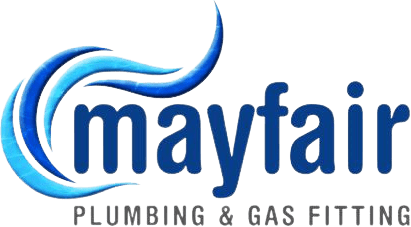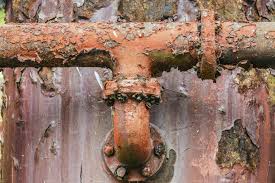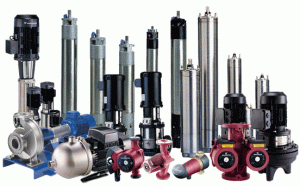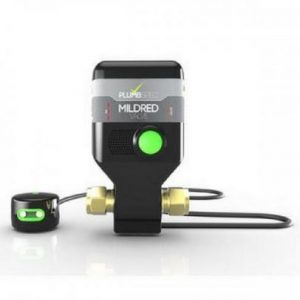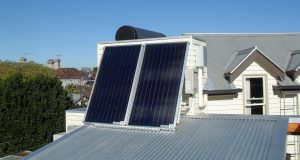If your hot water pressure is slow in just one fixture, you’ll want to check the status of your valves. If it’s on and not working for some reason, there might be a blockage somewhere that needs cleaning out or something more serious like an old pipe with sediment buildup.
Low hot water pressure is an inconvenience that no one likes. It’s usually a sign that there’s something wrong with your plumbing or with your home. While any DIY enthusiast can easily resolve some pressure issues, some instances might require immediate professional assistance as soon as possible. If you’re unable to determine the hot water pressure problem in your home, here are some common reasons for low hot water pressure and how to fix them.
Common Causes of Low Hot Water Pressure
Dirt/Debris build-up
Dirt/debris can clog the pores of your hot water heater, decreasing the amount of hot water that comes out. Residue from hard water scales or dirt/debris sucked in during a recent water fixture or replacement (especially if it was outdoors). If this is the problem, you can decrease the effects of the debris build-up by occasionally flushing out your water system.
Solution
- To check if you have excess sediment/dirt build-up in your system, take a pitcher and fill it with water from any of your hot water supply lines.
- Place it where it won’t be disturbed for about 20 minutes or so to allow sediment to settle down at the bottom.
- If you notice a lot of debris, you can flush your entire lines by turning on all faucets in the house together and letting them run for about two minutes each. This should also help get rid of any other sediments present in your pipes.
- If not installed, you can add a water filter on both the inlet and outlet of your hot water system.
Adding a filter to the inlet of your hot water system not only helps to reduce the sediment build-up in your hot and cold water supply lines but is also a great way to ensure that you are receiving clean, healthy, and soft water.
However, as time passes, debris will build up inside them, which can cause many problems with your home water system, such as an increased risk for clogs causing low water pressure. Replacing or cleaning filters often is recommended to avoid service disruption.
Malfunctioning Water Pressure Valve
A broken pressure regulator is one of the most common issues that cause low hot water pressure.
Pressure regulator valves are engineered to control the water pressure in your home. They usually allow water to flow at a constant rate even if the pressure from the main supply pipe is very high or low. This maintains a steady pressure throughout your home’s plumbing system so that when you turn on a tap, it will deliver water of the same pressure each time, no matter where in the home you are.
Pressure regulators are easy to recognize from their designs as they have a pressure gauge.
A busted pressure regulator significantly reduces water pressure input for both hot and cold water and can cause random spikes and dips in your water pressure output.
Solution
The only fix for faulty pressure valves is a complete replacement. If you decide to DIY the task, make sure you use a new original part intended explicitly for your unit.
But first, you have to determine if your pressure regulator is broken. To do this, you will need to connect a portable pressure gauge to an outdoor spigot to get a pressure reading.
The ideal water pressure for a regular household (with four bedrooms) should be between 60-80 pounds per square inch (psi). If the water pressure is significantly lower than this, you can proceed and replace the regulator or call in a professional to replace it for you.
Hot Water Shutoff Valve Is Partially Closed/Broken
One of the essential parts of any hot water system is a shut-off valve.
The valve helps regulate how much hot water comes out at once, and it’s always there to help you cut off your hot water supply if you need to do some repairs or replacements. Sometimes these valves can break or not open all the way causing a reduction in your hot water pressure.
If your hot water shutoff valve is partially closed, that can cause the overall hot water pressure to drop in the entire house.
Solution
Find the main water shut-off valve of your hot water system and test to see if it’s turned on all the way. If you are lucky, and the valve wasn’t open enough, this could be enough to fix your low hot water pressure problem. If the valve is broken, you will have to replace it or call a professional plumber to help.
Also, check if the main inlet water valve (that supplies all the water to your home) is turned on all the way.
NOTE: Make sure to turn off the main home supply water inlet valve before removing the hot water system valve; otherwise, you could worsen the hot water system problems.
Rusty/Corroded Pipes.
Pipe rusting and corrosion is a problem for many homeowners, especially those with old plumbing. Older piping can be made from cast iron or steel that are more vulnerable to the forces of oxidation than newer materials like copper pipes which are typically less susceptible to such degradation over time–though they too will eventually corrode if not correctly maintained.
If your home’s piping is made from steel or iron, a sign of corrosion may be that you are experiencing low water pressure (in both your hot and cold water faucets). The pipes could be cracked or full of mineral sediment and scale buildup. If this is the case in your home, it is wise to have your entire plumbing system inspected for signs of rust and damage as soon as possible.
Most modern home water systems are made using PVC or ABS plastic pipes that are resistant to corrosion and do not rust.
Solution
If only a few areas are corroded, especially near joints, you can hire a professional to cut out and replace only the corroded sections.
If you have an iron or steel pipe setup that is corroded, the best long-term solution is to rip it all out and replace it with a PVC plastic water pipe setup.
Hard Water Build Up
Most water supplied to our homes across Australia is hard water. This means it contains minerals such as calcium, magnesium, potassium, and sodium. This is, in fact, not as bad as you want to have some minerals in your water. However, if the hard water minerals are in excess quantities, they will precipitate and, over time, create a sort of coating inside of your plumbing lines.
This sort of hard water sediment build-up throughout the pipes can cause low hot water pressure. A classic way to tell if you have a high mineral content in your water is to check your sink or tub fixtures. If you notice a whitish film or discoloring, then hard water coat build-up could be the problem.
Note: This is rarely the cause of low water pressure in new systems. It’s mostly common in older systems (5+ years).
Solution
- If you have a hot water tank system, turn it off and completely drain the water,
- Replace it with about 2 gallons of vinegar and turn on the water heater. Make sure you inform everyone in the household not to use any of the water outlets.
- Vinegar is an easy, non-toxic and affordable solution to dissolve any mineral deposits in your pipes.
- Let the vinegar sit for about 6 hours, then open and flush all the faucets until you can no longer smell the vinegar.
- If you are using an instant water heater system, or the minerals build-up is too severe, you might have to seek help from a plumbing professional as they have special tools to fix limestone build-up in pipes.
Showerhead & Taps/Faucets
Is the hot water pressure low in your running well from the showerheads?
If you are experiencing low hot water pressure in a single outlet, the said outlet might likely be faulty, worn out, or have sediment build-up. It might be a blockage on the tap. If the hot water pressure is low in the shower but not anywhere else, it might be a simple issue with the showerhead.
Solution
The fix for a single showerhead or tap that is worn out is pretty easy, and you can do it yourself. Simply update the complete faucet, tap washers, or entire showerhead, and you are good to go! To ensure you get the correct size replacement fixture, carry the old one to the hardware store.
If the fixture has sediment and scale buildup, place it in a bucket and add an equal measure of water and vinegar till it’s completely submerged. You can also use vinegar only, lemon juice, or any safe-to-use acidic solution to dissolve the sediments clogging up your pipes.
Let the fixture sit submerged for about 4-6 hours, rinse it with water and fix it back. Open the water and let it run for about 30 minutes to clear out any tiny sediments left.
Blockages In Main Water Supply Lines
If you’re experiencing low water pressure, check the links between your home’s plumbing and the public supply system.
The pipes delivering water to your home could be experiencing leaking or blockages. While this is something you’ll need to have checked by a professional, you may also want to check from time to time for wet spots on the ground near your property. If there are any visible signs of moisture or flooding around the area where your pipes run close to the surface, it’s worth calling a plumber right away lest it causes more severe damage and higher repair costs in the future.
Also, make sure there is no sediment buildup or restriction caused by a plugged hydrant or fire hose. You can use an old piece of garden hose to flush out any debris from your supply pipes.
Water Leaks
If you’re noticing a reduced hot water pressure, it’s time to check your pipes. When diagnosing the source of low water pressure, check for any signs of leaks on the outside of your hot water system, like rust patches, especially around joints. If this is the case, shut off the hot water system before repairing the leaks.
If you are not a DIY type of guy, contact emergency plumbers to avoid further damage or, worse –the water droplets/patches caused by the leaks coming into contact with electrical wires.
Why You Should Call a Professional 24-Hour Plumber for Help
If you haven’t managed to fix the low hot water pressure issues on your own and need immediate help, then call for professional service.
At Mayfair, we provide emergency plumbing repair services to homes in Adelaide and South Australia. Our team of licensed plumbers offers various types of plumbing services such as emergency plumbing, hot water system installation, maintenance & repairs, sump pump replacement, and gasfitting. We provide 24-hour service for your convenience, so book an appointment now!
